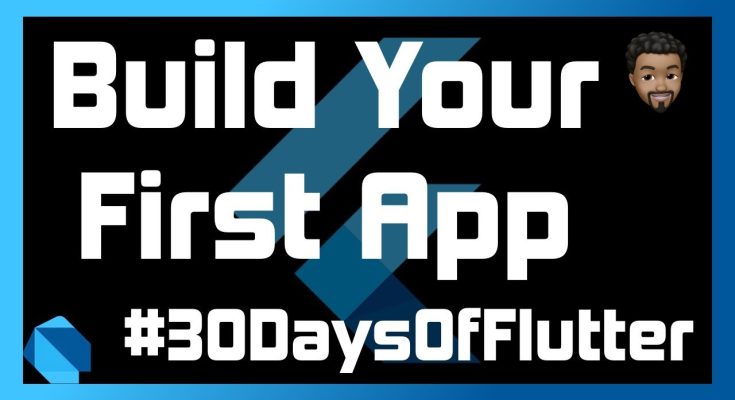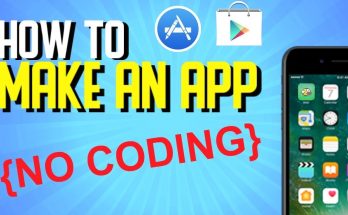For many aspiring entrepreneurs, developers, and product enthusiasts, the idea of building a mobile or web app can feel both exhilarating and overwhelming. You may have a great concept in your mind—something simple yet impactful—but translating that idea into a working application within a month might seem ambitious. The truth is, with the right mindset, tools, and process, building your first app in 30 days is not only possible—it’s a highly rewarding journey that teaches discipline, prioritization, and execution.
The first few days should be dedicated entirely to clarity. Before you even open a code editor or hire a developer, you need to understand what problem your app solves and who it’s meant for. Many first-time builders make the mistake of trying to do too much too soon. Instead, narrowing your focus to a single core feature can accelerate development and reduce complexity. For instance, if your idea is for a fitness app, don’t aim to build a full training platform right away. Start with one compelling feature—such as tracking daily workouts or sending motivational alerts—and build from there.
Once you’ve identified that core functionality, sketching out a wireframe or mockup can help bring your vision to life. You don’t need expensive design software to do this—pen and paper or free tools like Figma can work wonders. The purpose here isn’t to create a final design but to visualize the user journey. How does someone sign in? What do they see first? Where do they tap next? This exercise helps you plan the user interface and define the logical flow of the app, which in turn guides development.
Choosing the right technology stack is the next crucial decision. If you’re building a mobile app, frameworks like Flutter or React Native can help you create both iOS and Android apps from a single codebase, saving time and money. If it’s a web app, tools like Next.js or Laravel offer fast setup and built-in features that reduce development time. For those who aren’t technical, no-code platforms like Bubble or Glide can be incredibly effective for getting a prototype up and running quickly. These platforms let you build functional apps without writing a line of code, making them ideal for validating ideas before investing in full-scale development.
With your tools in place, the next phase is development. This is where the 30-day challenge truly begins. Timeboxing your progress into weekly goals is key. By the end of week one, aim to have a basic user interface set up. By week two, focus on making the main feature operational, even if it’s rough around the edges. Week three should involve testing, refining the user experience, and integrating small but necessary functions like login or data storage. Week four is all about polishing, squashing bugs, and preparing for a soft launch or demo.
It’s important to recognize that your first app won’t be perfect—and it doesn’t need to be. The goal is not to release a flawless product, but to create something functional, focused, and usable. Getting feedback early, even if it’s from a handful of friends or potential users, can help you make smarter decisions as you iterate. Many first-time builders fall into the trap of adding features they personally want rather than solving actual user pain points. By putting a version in front of real people, you gather insights that are far more valuable than assumptions.
Managing scope is one of the biggest challenges you’ll face during this process. It’s tempting to keep adding new ideas, features, or design tweaks as you go. But scope creep is the enemy of a 30-day build. Remind yourself that this is version one. Features that aren’t essential to the core experience can—and should—be added later. Focusing on a minimum viable product ensures you stay on track and finish with something tangible rather than a half-built project that never sees the light of day.
If you’re working solo, staying motivated throughout the month requires discipline. Daily check-ins, progress tracking, and setting short-term milestones can help you maintain momentum. If you’re part of a small team, regular communication and clear task ownership are vital. Tools like Trello, Notion, or Slack can make collaboration smooth and keep everyone aligned. Accountability, whether personal or shared, can be the difference between finishing strong and burning out midway.
Don’t underestimate the importance of testing. Even a small app should go through rounds of user testing to catch bugs, broken links, or confusing user flows. Take the time to use the app on different devices or screen sizes. Ask a few people who weren’t involved in development to try it out and share their honest impressions. Often, what seems intuitive to you may not be obvious to someone new. Fixing these early gaps before launch can significantly improve the first impression your app makes.
Finally, when your app is ready, launching doesn’t have to mean releasing it to the entire world. A soft launch—shared with a targeted group or even on a test platform—can help you gather real feedback without the pressure of a full-scale release. From there, you can make improvements, collect testimonials, and even build an audience ahead of a broader rollout.
The experience of building your first app in 30 days is more than a technical challenge—it’s a crash course in execution. It teaches you how to take an idea from concept to reality, how to make tough decisions with limited time, and how to focus on value over perfection. Whether your goal is to start a business, build a portfolio, or simply bring an idea to life, completing an app in a month proves that you can ship—and that’s one of the most powerful skills in the digital age.




